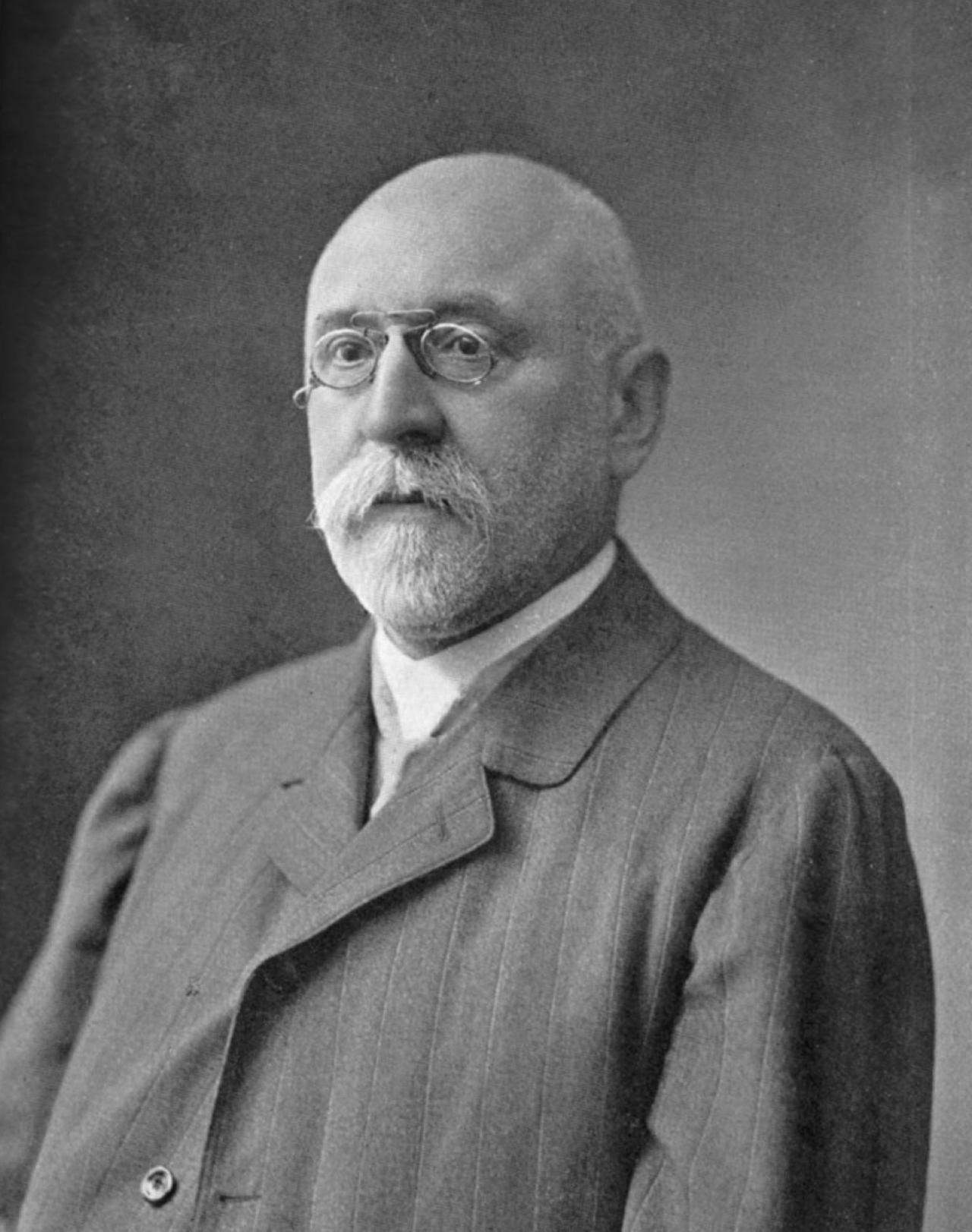Čeněk Strouhal
Dating: 10.4.1850 – 23.1.1922
Annotation:
Čeněk Strouhal was a prominent experimental physicist at the turn of the 19th and 20th centuries, who laid the foundations of experimental physics in this country. He was one of the pupils of Ernst Mach and Friedrich Kohlrausch. He built the first physics institute and headed it for many years. He devoted himself to many fields of physics and is the author of a number of basic physics textbooks. The dimensionless Strouhal number is named after him.
Description:
On 10th April 1850, on the Seč village green, a son was born to the family of Jakub Strouhal, a poor crofter, whom they named Vincenc. From when he was small everyone called him Čeněk and this Czech variant of his original name stuck with him. Little Čeněk showed a great talent at the local primary school and was so gifted in physics and mathematics that his physics teacher sometimes used to let him hold the lessons for his classmates. He studied at grammar school in Hradec Králové and later enrolled to study his favourite subject, physics, at Charles Ferdinand University in Prague, where he studied alongside another prominent physicist and astronomer, August Seydler. Both of them were lucky with their teachers. Working there at the time they were studying at the Faculty of Arts, where physics was taught, was the genius physicist Ernst Mach, who took note of Strouhal’s talent and recommended him to serve as assistant to Professor Kohlrausch in Würzburg, where the physics institute was in the process of being built. This gave young Strouhal the chance to work for an acclaimed physicist and also gain experience not only with laboratory work, which was far more limited in Bohemia, but also with the running of the actual physics institute. In the Würzburg institute Strouhal devoted his time to studying magnetism, mechanics, aerodynamics and other subjects. In 1878 he qualified with his work on three tones. In his habilitation thesis he computed the constant that still bears his name today – the Strouhal number indicates the relationship between the frequency, characteristic dimension and the speed scale of a periodically changing flow. In 1882 he finally moved back to Prague for good, found a job as a fully-fledged professor and took on the demanding task of building a physics institute – first within the limited constraints of Prague’s Klementinum and then from 1907 in a separate building in Karlov in Prague, thus establishing the first physics institute in the Czech lands, which at that time was one of the most modern workplaces in Europe. Nowadays the original institute forms the basis of the buildings used to teach physics at the Faculty of Mathematics and Physics of Charles University.
Connected places:
Commemorative Plaque to Čeněk Strouhal in SečPamětní deska Čeňka Strouhala v Seči
Keywords: physics; mathematics; physics; Faculty of Mathematics and Physics; Strouhal number; Karlov
References:
STROUHAL E.; TĚŠÍNSKÁ, E.; VALENTA, J.: Profesor Čeněk Strouhal: zakladatel české experimentální fyziky. Praha 2012. 295 s.
TĚŠÍNSKÁ, E.: Fyzik Čeněk Strouhal. Bulletin Československé akademie věd, č. 3, str. 8
Author's initials: PH
Photos:

Čeněk Strouhal (Author: Public domain)

